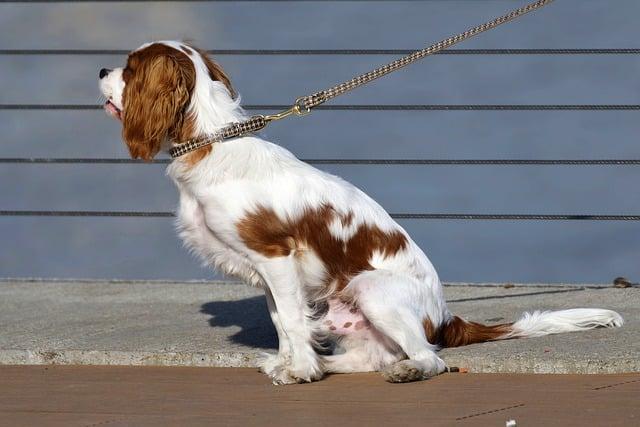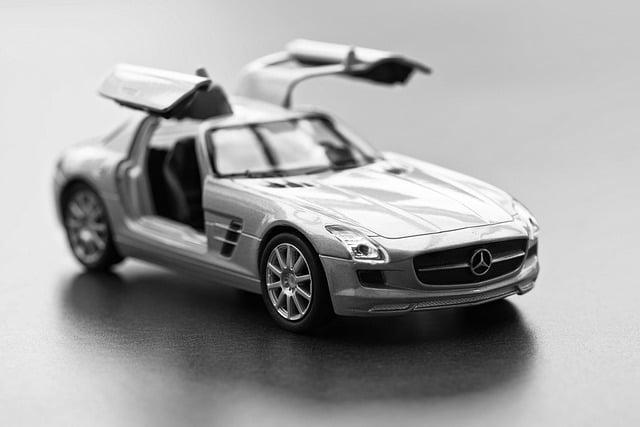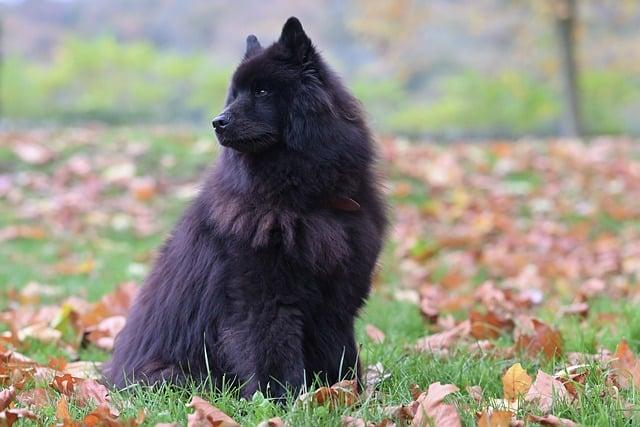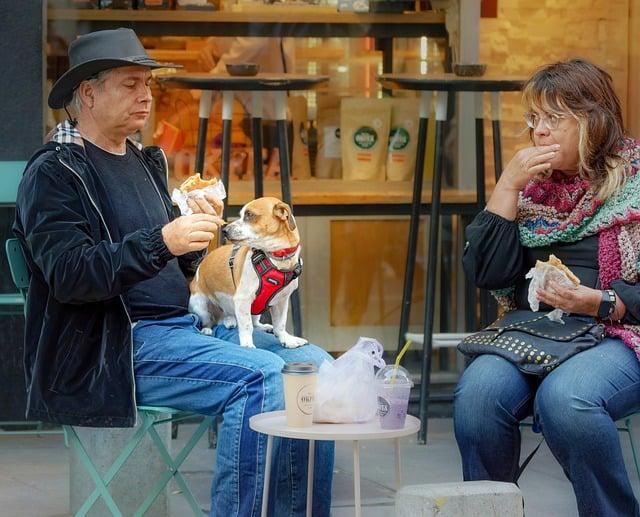When Max, a spirited golden retriever, playfully growled as I reached for his favorite squeaky toy, I was taken aback. Was he being aggressive? As I observed, I realized his behavior stemmed from instinct. Dogs are naturally protective of their possessions, viewing toys as treasures. This instinct is rooted in their ancestral survival skills. Instead of seeing it as a threat, I learned to engage him in a game of trade, fostering trust and understanding. By respecting his feelings, I transformed a potential conflict into a bonding experience. Understanding your dog’s behavior can deepen your connection and enhance your relationship.
Contents
- Understanding Canine Behavior and Toy Possession
- The Psychology Behind Resource Guarding in Dogs
- Effective Strategies to Manage and Redirect Aggressive Play
- Building Trust and Communication with Your Dog Through Positive Reinforcement
- Q&A
Understanding Canine Behavior and Toy Possession
Understanding your dog’s behavior when it comes to toy possession is crucial for fostering a healthy relationship. Dogs are naturally territorial, and toys often become their prized possessions. When you attempt to take a toy away, your dog may perceive this as a threat to their resources, triggering a defensive response. This instinctual behavior is rooted in their ancestry, where resource guarding was essential for survival. Recognizing this instinct can help you approach the situation with empathy rather than frustration.
It’s important to note that not all dogs will react aggressively when their toys are taken. Some may simply engage in playful tugging or running away, while others might exhibit more intense behaviors, such as growling or snapping. These reactions can vary based on factors such as breed, socialization, and individual temperament. Understanding your dog’s unique personality will allow you to tailor your approach to managing toy possession and reducing the likelihood of aggressive responses.
To effectively address this behavior, consider implementing positive reinforcement techniques. **Reward your dog for allowing you to handle their toys** without reacting negatively. Start by engaging in play sessions where you can gradually introduce the idea of sharing. Use treats or praise to reinforce calm behavior when you approach their toys. This method not only helps your dog associate your presence with positive experiences but also encourages them to feel more secure in sharing their possessions.
Additionally, providing your dog with a variety of toys can help alleviate possessiveness. **Rotate toys regularly** to keep their interest piqued and reduce the likelihood of them becoming overly attached to a single item. By creating an environment where your dog feels secure and less threatened by the presence of humans around their toys, you can significantly decrease the chances of aggressive behavior. Remember, patience and consistency are key in reshaping your dog’s perception of toy possession.
The Psychology Behind Resource Guarding in Dogs
Understanding the behavior of dogs, particularly when it comes to resource guarding, is crucial for any pet owner. When a dog reacts aggressively to the removal of a toy, it often stems from an instinctual drive to protect what they perceive as valuable. This behavior can be traced back to their ancestors, who had to defend their resources to survive. In a domestic setting, this instinct manifests as a protective response to toys, food, or even spaces that the dog considers theirs.
Several factors contribute to this behavior, including **genetics**, **environment**, and **past experiences**. Some breeds are more predisposed to resource guarding due to their historical roles, such as herding or guarding. Additionally, a dog’s upbringing plays a significant role; if they were not properly socialized or if they experienced competition for resources in their early life, they may develop a heightened sense of possessiveness. Recognizing these underlying factors can help owners understand their dog’s perspective and the motivations behind their actions.
Moreover, the emotional state of a dog can greatly influence their response to perceived threats to their resources. Dogs often experience feelings of anxiety or insecurity, which can trigger a defensive reaction when they feel their possessions are at risk. This emotional response can be exacerbated by stressors in their environment, such as changes in routine or the presence of unfamiliar people or animals. By identifying and addressing these stressors, owners can create a more secure environment for their pets, potentially reducing the likelihood of aggressive behavior.
To effectively manage resource guarding, it is essential to implement positive reinforcement techniques. Instead of punishing the dog for their behavior, owners should focus on teaching them that sharing can lead to positive outcomes. Strategies such as trading a toy for a treat or engaging in interactive play can help shift the dog’s perception of resource sharing from a threat to an opportunity for reward. This approach not only fosters trust between the dog and owner but also encourages a healthier relationship with their possessions.
Effective Strategies to Manage and Redirect Aggressive Play
Managing and redirecting aggressive play in dogs requires a thoughtful approach that prioritizes safety and positive reinforcement. One effective strategy is to **establish clear boundaries**. This involves teaching your dog what is acceptable behavior during playtime. Use commands such as “leave it” or “drop it” consistently, rewarding them with treats or praise when they comply. This not only reinforces good behavior but also helps your dog understand that relinquishing their toy can lead to positive outcomes.
Another crucial tactic is to **provide alternative toys** that can divert your dog’s attention away from aggressive behavior. Choose toys that are specifically designed for tugging or chewing, which can satisfy their natural instincts without leading to confrontational play. When your dog begins to show signs of aggression, redirect their focus to these alternative toys, encouraging them to engage in more appropriate play. This method not only mitigates aggressive tendencies but also enriches their play experience.
Incorporating **structured play sessions** can also be beneficial. Schedule regular playtimes where you can engage with your dog in a controlled environment. Use interactive games that require cooperation, such as fetch or hide-and-seek, to foster a sense of teamwork. During these sessions, monitor your dog’s behavior closely, and if aggression arises, pause the game and redirect their energy towards a calmer activity. This teaches your dog that playtime is enjoyable without the need for aggression.
Lastly, consider **seeking professional guidance** if aggressive behavior persists. A certified dog trainer or behaviorist can provide tailored strategies and insights specific to your dog’s temperament and history. They can help you implement a training plan that addresses the root causes of aggression, ensuring a safer and more enjoyable playtime experience for both you and your furry friend. Remember, patience and consistency are key in reshaping your dog’s behavior.
Building Trust and Communication with Your Dog Through Positive Reinforcement
Understanding your dog’s behavior is crucial in fostering a harmonious relationship. When your dog tries to bite you while you’re taking away his toy, it often stems from a place of fear or insecurity. Dogs can perceive the act of removing their toys as a threat to their resources, triggering a defensive response. This reaction is not rooted in aggression but rather in a natural instinct to protect what they value. By recognizing this behavior, you can take steps to address it positively.
Positive reinforcement is a powerful tool in reshaping your dog’s perception of sharing and resource management. Instead of approaching the situation with force or reprimand, consider using treats or praise to create a positive association with the act of relinquishing toys. For instance, when you want to take a toy, offer a high-value treat in exchange. This method not only encourages your dog to willingly give up the toy but also builds trust, as your dog learns that you are not a threat but a source of rewards.
Consistency is key in this training process. Establish a routine where your dog understands that giving up a toy leads to something positive. Use clear commands and signals, and always reward your dog for complying. Over time, your dog will learn that sharing does not result in loss but rather in gaining something enjoyable. This approach not only enhances communication between you and your dog but also strengthens your bond, as your dog begins to see you as a partner rather than an adversary.
Additionally, it’s essential to create an environment where your dog feels secure. Ensure that your dog has plenty of toys and resources to prevent possessiveness. Engage in regular play sessions that promote sharing and cooperation. By fostering a positive atmosphere and using reinforcement techniques, you can effectively reduce the likelihood of biting incidents and cultivate a trusting relationship with your furry friend. Remember, patience and understanding are vital as you navigate this journey together.
Q&A
-
Why does my dog see me as a threat when I take his toy?
Dogs are naturally protective of their possessions, including toys. When you attempt to take a toy away, your dog may perceive this as a threat to their resource, triggering a defensive response. This behavior is rooted in instinct and can be managed with proper training.
-
Is my dog being aggressive when he tries to bite me?
Not necessarily. While your dog’s behavior may seem aggressive, it could be a form of play or an expression of frustration. Understanding the context and your dog’s body language is crucial in determining whether the behavior is aggressive or simply a reaction to feeling threatened.
-
How can I prevent my dog from trying to bite me over toys?
Training is key. Use positive reinforcement techniques to teach your dog commands like “drop it” or “leave it.” Gradually desensitize your dog to having their toys taken away by rewarding them for calm behavior. This will help them understand that relinquishing a toy does not mean losing it forever.
-
Should I be concerned about my dog’s behavior?
While occasional toy guarding is common, consistent aggression or biting should be addressed. Consult a professional dog trainer or behaviorist if the behavior escalates. Early intervention can help ensure a safe and harmonious relationship between you and your dog.
understanding your dog’s behavior when they react defensively over toys is crucial for fostering a healthy relationship. By addressing their instincts with patience and training, you can transform playtime into a positive experience for both of you.

大家好,我是彼得潘,專業的手法身體治療師。我喜歡探索和研究各種主題,並透過與人工智慧的合作分享專業、實用、有趣的文章。我們定期進行人工審核,以確保內容的準確性。如果您發現文章中有任何不準確的地方,請隨時與我們聯繫,我們會及時糾正。您可以透過 [email protected] 與我們聯繫。



